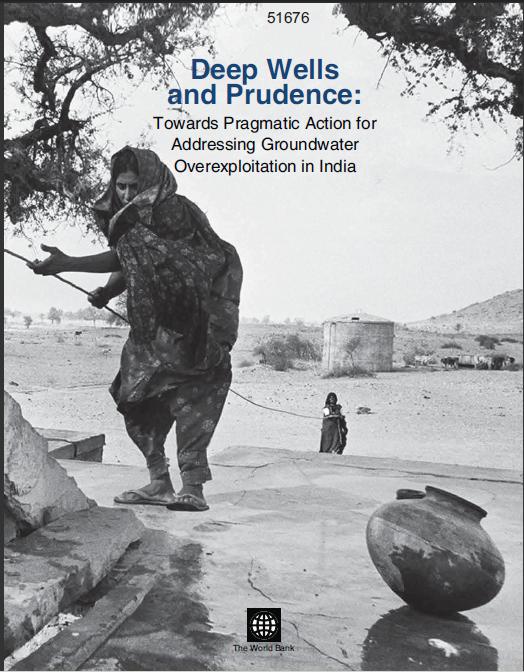Governance
India's agricultural statistics at a glance – A Publication by Directorate of Economics and Statistics, Department of Agriculture and Cooperation (2010)
Posted on 13 Apr, 2011 08:06 AM “Agricultural Statistics at a Glance 2010” is compiled by the Directorate of Economics and Statistics, Department of Agriculture and Cooperation. It provides a wide range of data on outlays, expenditure and capital formation, crop production and productivity across States, markets and prices, terms of trade, price support and procurement, domestic and international trade, credit, insurance etc.,
“Agricultural Statistics at a Glance 2010” is compiled by the Directorate of Economics and Statistics, Department of Agriculture and Cooperation. It provides a wide range of data on outlays, expenditure and capital formation, crop production and productivity across States, markets and prices, terms of trade, price support and procurement, domestic and international trade, credit, insurance etc.,
Timely availability of reliable information on agricultural output and other related aspects is of great significance for planning and policy making particularly, in the management of concerns in areas such as food security, price stability, international trade etc. The information is extremely useful in identifying problem areas and the nature of required intervention in terms of spatial, temporal and qualitative inferences. The handbook presents a comprehensive picture of the progress made by the agriculture sector at the All India level as well as across the States.
Presentations from the Water India conference organised by Confederation of Indian Industry (2011)
Posted on 12 Apr, 2011 11:56 PMThe Confederation of Indian Industry (CII)organised the Water India conference, around the theme “Transforming the municipal and industrial water landscape - Issues, challenges and opportunities".
MoRD is inviting comments from the public on the draft version of the MGNREG Audits of Schemes Rules, 2011
Posted on 12 Apr, 2011 07:10 PMNREGA poster boy in Chattisgarh struggling for late payment compensation - Audio update from CGNet Swara
Posted on 12 Apr, 2011 06:49 PMBut as you may recall as it was reported before on this forum that his son died in need of attention when he was still struggling to get his wages.
Challenges, potential and way forward - An update from the NREGA Consortium
Posted on 12 Apr, 2011 06:18 PMRecommendations of Working Group on Agriculture to increase agricultural production and productivity in the country - PIB release
Posted on 12 Apr, 2011 05:40 PM
A summary of major recommendations of Working Group are as follows: -
BRIDGE TO INDIA is looking for entrepreneurial and innovative interns at New Delhi – Last date to apply 15th May 2011
Posted on 12 Apr, 2011 12:48 PMForwarded to the portal by: Mohit Anand
BRIDGE TO INDIA is a consulting company with an entrepreneurial approach based in New Delhi.We are looking for an entrepreneurial and innovative intern. The candidate should speak excellent English and share our passion for finding business solutions to India’s energy and environmental challenges.
Description:
Interns will work in our fields of business: renewable energy, resource management and urban planning. The role of interns is not only to provide support for ongoing and future projects but also to engage intellectually and entrepreneurially with BRIDGE TO INDIA’s work. As BRIDGE TO INDIA is a small and dynamic company, there is a lot of opportunity to contribute own ideas and be actively involved in taking on new tasks.
Deep wells and prudence - Towards pragmatic action for addressing groundwater overexploitation in India - A World Bank document (2010)
Posted on 12 Apr, 2011 01:51 AM India is the largest user of groundwater resources in the world. It is estimated that approximately 230 cubic kilometers per year is used annually, this is more than a quarter of the total world consumption from this resource.
India is the largest user of groundwater resources in the world. It is estimated that approximately 230 cubic kilometers per year is used annually, this is more than a quarter of the total world consumption from this resource.
It is in this context that this World Bank report looks at the reasons for this quantum of groundwater usage.
The report delves into socio-economic and political reasons and looks at policies which inadvertently promote so much extraction. The report also analyses various attempts to manage this resource. These attempts range from government and international agency efforts directed to grassroots mobilisations. Finally the report comes out with suggestions to deal with this crisis.
Groundwater use in Aurangabad – A survey and analysis of social significance and policy implications for a medium-sized Indian city by GW MATE and World Bank (2008)
Posted on 12 Apr, 2011 01:17 AMAurangabad, a city in central Maharashtra is in a drought prone region, and being a rapidly urbanising town, is facing a lot of pressure on ots water resources. Besides importing water there has been an increasing trend of ground water extraction.
In this context, a survey of groundwater use was conducted as part of a World Bank study on Indian groundwater management. The study was a collaboration between GW MATE(Groundwater Management Advisory Team) and GRASP (Grass Roots Action for Social Participation), an Aurangabad-based civil society organization working on community-based natural resource management.
New policy framework for rural drinking water supply: Swajaldhara guidelines – An article by Philippe Cullet in Economic and Political Weekly
Posted on 11 Apr, 2011 07:09 PMIt examines its evolution from the 1970s onwards and focuses, in particular, on the reforms of the past decade, looking more specifically at the Swajaldhara Guidelines. These reforms are of capital importance because they seek to completely change the rural drinking water supply policy framework.





